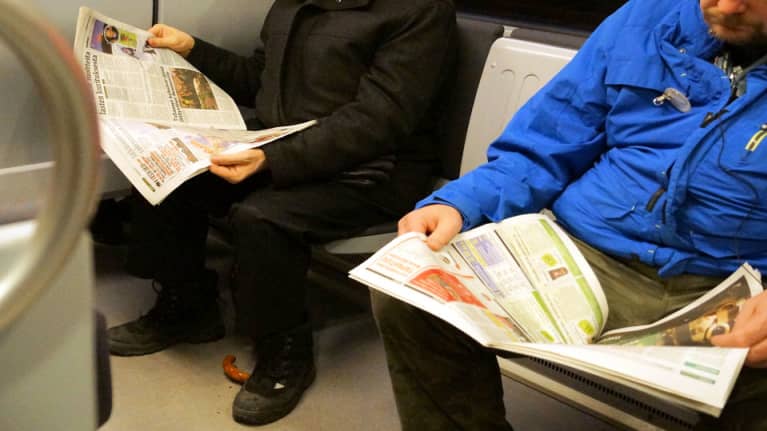Monday evening saw a series of events throughout of country marking the "night of the homeless", an annual happening aimed at drawing attention to the plight of people who do not have a place to call home.
The Tampere-based_ Aamulehti_ noted that more that 60% of the homeless in Finland are in the capital region, but they are to be found in other larger urban areas, as well.
It wrote that in and around Tampere, most of the homeless are without a roof over their heads short-term. The number of long-term homeless in Tampere is estimated to be 55 people. However, the number of homeless varies by season, and there is a hidden homelessness that does not show up in the statistics.
Aamulehti interviewed Vesa Jumppainen, a local 44 year-old man who last had a fixed abode five years ago. He is currently living in a homeless shelter facility in Tampere, hoping to find a flat on the rental market, but has a bad credit history that severely hinders his chances.
Listening to speeches at an event Monday evening, Jumppainen said he was annoyed that the politicians didn't present concrete proposals to eliminate homelessness. He had his own suggestion.
"Why are the reception centres for asylum seekers that are being closed left empty? Why can't they be used to house the homeless?" Jumppainen asked.
Toys and jihadist ties?
The newspaper Helsingin Sanomat reported late Monday that celebrated Finnish-Syrian toy smuggler Rami Adham has given up membership of the Social Democratic Party after less than a month, following weekend reports that he had ties to jihadist groups in Syria (see: Finnish-Syrian toy smuggler quits SDP after paper reports jihadist ties) . Adham has denied any such ties.
Adham caught the attention of the media earlier this year for transporting toys into war-torn parts of Syria to distribute to children. The international media dubbed him the "toy smuggler of Aleppo" while reporting on the 28 visits he has made to hand over toys to Syrian children.
According to an item carried in Helsingin Sanomat's Tuesday edition the umbrella organization for Finnish civil society groups that work with development cooperation, Kepa, now plans to investigate Adham's connections with radical movements in Syria.
The paper also carried a report by the Finnish News Agency STT according to which Adham has several convictions in Finland for assault, received a suspended prison sentence for involvement in a doping ring, and has been named in a case that is pending which involves assault and illegal substance charges.
More light
Even we move towards the darkest months of the year, _Turun Sanomat _reports that Finnish industry is becoming increasingly keen on solar energy.
Over the last couple of years, it writes, the number of applications to officials for public aid to expand solar energy production has been on the rise.
Last year, there were around 100 solar energy projects underway in the country. Turun Sanomat quotes an estimate by an official from the Ministry of Economic Affairs and Employment that by year's end, the number of solar energy projects may have doubled.
Meanwhile, on the same topic, Mari Pantsar of the Parliament-backed development fund Sitra told the economic and business daily _Kauppalehti _that while energy and climate policy is seen as an environmental issue, it is much bigger matter in economic terms, "Finland should adopt a solar and wind energy strategy because they are a comprehensively cheaper alternative for society," she stated.
Teen brains
The newsstand tabloid _Iltalehti _takes up an issue that has stumped many a parent: what causes teenagers to fly into rages?
The paper interviewed brain specialist Minna Huotilainen who says that provocative behaviour at home and school by teens is a normal part of how their brains develop.
The brains of teenagers are undergoing a process of transformation that continues up until the age of 25. Part of this is behaviour testing limits, individuality and reactions by other people.
She explains so-called "teen rage" as reflecting this learning process.
"They have to test the impact of their own words and actions. Some teens are encouraged at home to direct this towards socially beneficial activities, they may want to get involved environmental protection projects. For some it turns into trying to upset the teacher," Huotilainen points out.
Huotilainen adds that parents can misinterpret the situation as an expression of anger, and notes that parents have responsibility for helping their teens past this phase.
"If they get a reasonable response at home, that is if parents act like adults and, for example insist on good manners, it can make what happens at school easier."
The good news for parents in the_ Iltalehti _article is Minna Huotilainen's assurance that the worst phase only lasts a year, or two, at most.
